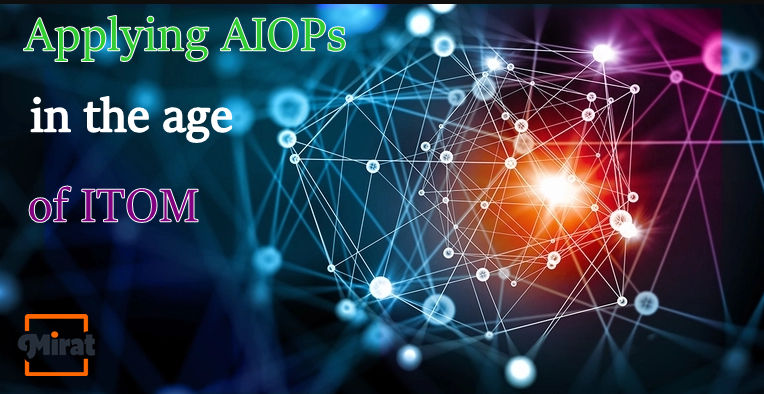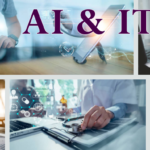Back in those days, the concept of artificial intelligence and machine learning seemed like something out of a sci-fi movie. The kind of AI and ML in RoboCop might seem far-fetched (and unnecessary), but we’re beginning to see the benefits and applications of this technology in the real world. Artificial Intelligence (AI) and machine learning are being used by software developers and ITOM professionals alike to improve their customers’ software-buying experience.
As a direct consequence, the term “AIOps” was coined. AIOps utilizes AI and machine learning in software development and IT operations (ML).
AIOps will allow for incident response times to be reduced to a negative value in the future. Your service may be able to use AI and automation to detect an outage or error before a customer is notified, identify the root cause, and implement a playbook, all before a customer is notified.
It is time to consider the future of ITOM as it evolves in light of recent developments in artificial intelligence (AI), machine learning (ML), and other forms of automation (FA).
What is the acronym for ITOM?
IT Operations Management is the practice of overseeing a team’s entire IT infrastructure, including its applications, networks, databases, and so on (ITOM).
Resilient systems are built and maintained through intelligent technology management, which is what ITOM refers to as the field’s practitioners and engineers collectively as “ITOM.” ITOM has traditionally encompassed a wide range of IT management functions, from configuration and release management to incident and remediation management.
ITOM’s traditional hierarchical structure has been somewhat dismantled by the emergence of new technologies such as DevOps, cloud infrastructure, CI/CD, microservices, and containers. IT operations were separated from the code developers in ITOM, resulting in a clear delineation of roles and responsibilities. However, these distinctions are becoming increasingly hazy. When it comes to IT operations management, developers are taking on more of the burden, while IT practitioners are becoming more involved in the development process (e.g., QA, automated testing).
Since these processes take a lot of time, effort, and resources, teams are looking for ways to streamline them using automation and artificial intelligence (AI).
Basically, AIOps refers to the use of artificial intelligence in operational tasks. In ITOM, the most intriguing aspect is how AIOps is being used and the potential it holds. Working to find the right balance between today’s AI technology and what’s to come. In order to gain a better understanding of the human operations responsible for service outages, can real-time incident response chat history be read and correlated with system data using artificial intelligence (AI)?
AIOps represents the pinnacle of what’s possible when data is integrated into every aspect of operations. Mirat.ai’s IT Service Intelligence can already be used to correspond incidents and services, resulting in less reactive mishap management and response team today. Furthermore, this AIOps solution is seamlessly integrated with Mirat.ai’s human on-call workflows. We are able to take action faster, develop better automation and collaborate more effectively when we are connected to our tools and systems more closely than we are currently.
DevOps culture is on the rise.
AIOps provides IT operations teams with visibility into development pipelines by connecting them to production systems. Software delivery and deployment processes will become more transparent and reliable if all aspects of the process are made public. Automated, collaborative, and transparent. DevOps is being adopted to support AIOps from a people operations perspective.
AIOps can be applied in more areas if developers and IT engineers work together more closely. When it comes to software testing, how can artificial intelligence (AI) benefit the process? AIOps continues to be exploratory in nature, feeding into the DevOps mindset of continuous improvement. Teams can create AI models to better understand how production environments work as machine learning models, both supervised and unsupervised, become more complex and accurate. Artificial Intelligence (AI) may one day be used to assist in drawing service maps and monitoring the health of complex, automated microservices architectures.
The use of AIOps in the context of DevOps and ITOM
AIOps in DevOps and ITOM isn’t as proactive as we’d like it to be in today’s applications. When it comes to IT professionals who want to improve the observability of their applications and IT infrastructure, AIOps is already making an impact. Mirat.ai’s AIOps and machine learning already assist teams in responding to incidents more effectively by suggesting additional responders and similar incidents to look for.
As important as ever, the evolution of CI/CD and DevOps for people and machine learning and AI for systems is forever altering what ITOM was.
FAQs
What is ITOM?
Management of infrastructure and services, such as data centres, private clouds, and public clouds are all part of IT operations management (ITOM). This includes all of these things and more.
What is DevOps?
The practices and tools of DevOps enable companies to deliver applications and services at high velocity, allowing them to improve and evolve their products more quickly than before. Because of this, businesses are able to provide better customer service and compete better in the market.
Mirat.ai’s IT Infrastructure Management is Affordable & Easy to use! Get your Dashboard ready in only 5 Minutes. Request for Trial/Demo now (or) Contact our Team Now .
Contact Information:
Hema
Sales Executive
Phone: +1-315-636-4213
Email: sales@mirat.ai
Website: https://www.mirat.ai/

